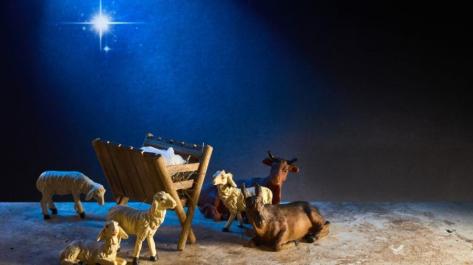Who was actually in the Manger? Animals of the Nativity

Have you ever wondered about the animals in the nativity scene? Well I have (of course). Most representations of Jesus’ birth show donkeys, cows, and sheep watching over the baby Jesus and a camel or two arriving with the Three Kings. But sometimes you come across other animals in the nativity and if you are like me, you might wonder why. The nativity scene, a universal symbol of the Christmas celebration, is open to interpretation across different cultures. One of the most interesting aspects of this is the inclusion of local animals based on geography. For example, in Italy the nativity scene often features dogs among the traditional animals. Dogs are associated with shepherds. They symbolize loyalty and vigilance. South American nativity scenes often include native animals such as llamas and alpacas, often used as pack animals and for their wool, celebrating the region’s rich cultural heritage. African interpretations of the nativity scene may include zebras, lions, giraffes and elephants as a sign of strength alongside the traditional animals.
Do you include unique animals in your nativity scene? Do you have a non-traditional nativity scene? Besides a traditional nativity scene, I also have an all-dog nativity scene. Is anyone surprised? My nephew’s family always has Barney the purple dinosaur in their nativity scene. When he was a little boy his parents always had the traditional nativity scene set up at Christmas time. He liked to play with the animals in it, which his parents were fine with as long as he always returned them to the nativity scene. One day his parents noticed that there was an addition to their nativity scene. A large purple Barney dinosaur had appeared in the manger. (see photo to left) Seems my nephew decided Barney needed to be watching over the manger. It became a Christmas tradition each year after that to have Barney in the nativity scene. It just wasn’t complete without Barney. This tradition continued as he grew up and to this day, my nephew who is now in his middle thirties with three kids of his own continues to place Barney in the nativity scene at Christmas. Barney in the manger holds a special childhood memory for him at Christmas.
There are many theories on which animals (if any) were at the birth of Jesus as well as their significance, symbolic or historical reason to have been there. The most famous ones are probably the donkey, oxen/cows, along with perhaps sheep and of course camels. Mary is thought to have rode to Bethlehem on a donkey which was a common mode of transportation for the poor in biblical times, thus a donkey would have more than likely been present. The oxen may have attracted the Holy Family into the manger with its bellowing and stories include it giving up eating its straw to provide a bed for Jesus in the manger. Cattle also became associated with the nativity scene after the late 19th century Christmas carol “Away in a Manger” and its phrase “the cattle were lowing.” Since there were probably several shepherds in the area around Bethlehem at the time it’s very possible there could have been sheep in the manger. Including sheep could also be a metaphor of Jesus as the Good Shepherd who guides and protects his flock. Camels, who are often included in the nativity scene with the Magi, or the Three Wise Men may symbolize the long and challenging journey undertaken from the East to witness the newborn Savior. They also add an element of historical accuracy as they would have been used for a mode of travel. We may at times find other barnyard animals included in the nativity scene such as horses, geese, pigs, chickens and other birds, as well as dogs and even cats. There are many beliefs around the existence of the various animals depicted in the nativity scene.
When I set out to research what animals were present in the manger at the birth of Jesus and their significance for this article, I expected to find very specific answers. That is not what I found at all. In fact, what I found was really a mystery in regard to the animals. Surprisingly (at least to me) the Bible doesn’t specifically say if any animals were there. While there are references in other parts of the Bible to the “ox and ass”, nowhere does it come right out and say, “Mary rode a donkey to Bethlehem” or “an ox greeted Mary and Joseph in the manger”. Scholars and historians have various theories on whether there even were any animals present, let alone which ones. What I found most interesting were the variety of animals depicted in nativity scenes based on geography. I guess I never thought about how different cultures around the world may envision different animals’ importance at the birth of Jesus. Regardless of whether or not there were animals present or which animals were present, the one universal message of the nativity scene is the same everywhere…one of hope, peace, comfort and joy. Something animals tend to give effortlessly to humans all the time and something our current state of the world could really use right about now.
So, no matter if your nativity scene includes animals or not, the traditional donkey, ox and sheep or Barney the purple dinosaur; the message of the nativity scene is one I hope resonates with you this Christmas season. May we all find a little hope, peace, comfort and joy. Humans and animals alike. Sandy Vesledahl - Office Administrator
